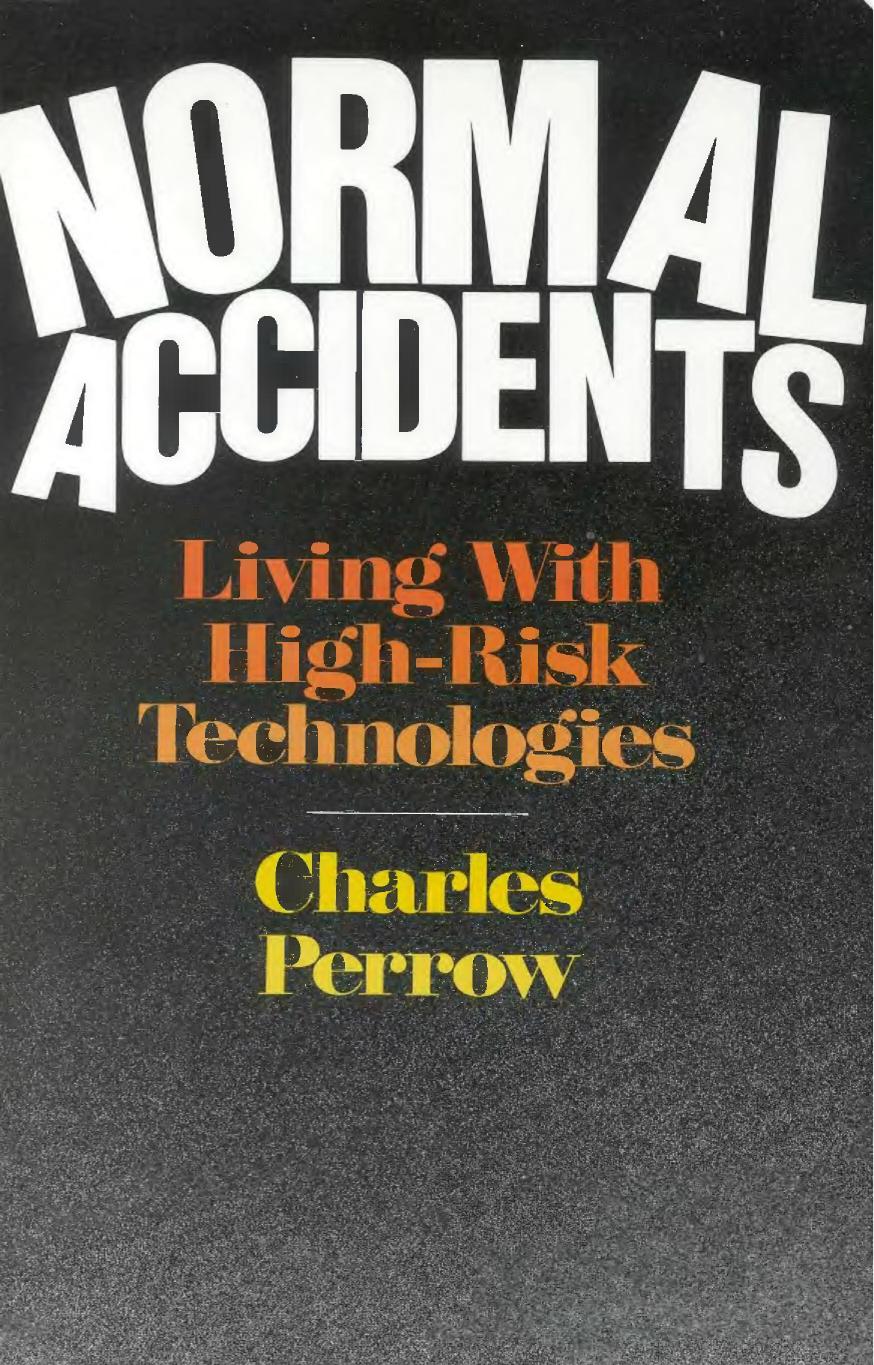Normal Accidents by Charles Perrow

Author:Charles Perrow
Language: eng
Format: epub, pdf
Publisher: Princeton University Press
Published: 2013-04-04T04:00:00+00:00
Quake Making
The Teton disaster was a component failure accident of design and operator (management) error. But disturbing the earth’s surface on a grand scale is always a bit risky; a geologic and geothermal system is being altered. The disturbances may create system accidents rather than the much more preventable component failure accidents. Increasingly we are going into the thin mantle that separates us from the core of the earth, in search of minerals, water, garbage cans, or containers for explosions.
In the process, we have created earthquakes in more mysterious ways than through the filling of dams. Some of these are worth a brief examination. Underground nuclear explosions have set off earthquakes. For example, in 1968 an underground explosion in a Nevada test site gave rise to thirty small earthquakes within three days. Apparently, an old fault was reactivated by the explosion. Minor tremors continued for weeks.21
Such concerns led to protests by Canada and Japan about a series of underground nuclear tests along the Pacific tectonic plate. The United States set off explosions in the Alaskan Aleutian Islands, but Canada and Japan were concerned because the plate runs from Vancouver, British Columbia, to Japan. Fortunately, no disturbance of the plate was apparent.
Denver, Colorado, had a mild earthquake in April 1963. It was a surprise, since there had not been an earthquake in the area in eighty-one years. Small ones continued for several years; one in 1967 did a little damage to the city. It turned out that the army caused them.
The army’s Rocky Mountain Arsenal is 10 miles from Denver. It manufactures toxic materials, such as nerve gas, and had to get rid of large amounts of contaminated water. For a time they just put it into holding ponds, but this led to the death of crops, livestock, and wild life. So they dug a well, 2 miles deep, and forced the garbage into it under high pressure. Six weeks later there was the first earthquake, and then an almost daily series of minor tremors. The source of the earthquake was suspected within a year, but the army denied it could happen and went on pumping. The water, under high pressure, forced the old cracks in very old rocks to grow, and this allowed the rocks, under pressure from tectonic movements, to slide in jerky movements over one another. Even after the pumping stopped, for a time the pressurized water continued to force open the cracks. About two years after the army finally stopped the practice, the earthquakes also stopped.
Similar mishaps occurred in another part of the state when an oil company forced water into drill holes to increase the flow of oil; earthquakes appeared, and stopped a while after the practice ceased. The National Center for Earthquake Research took over a part of the field for deliberate experimentation. When they pumped water in, earthquakes occurred; when they pumped the water back out, they stopped. This led to a recommendation that part of the San Andreas fault near San Francisco be locked into place in a series of 500 operations.
Download
This site does not store any files on its server. We only index and link to content provided by other sites. Please contact the content providers to delete copyright contents if any and email us, we'll remove relevant links or contents immediately.
| Automotive | Engineering |
| Transportation |
Whiskies Galore by Ian Buxton(41928)
Introduction to Aircraft Design (Cambridge Aerospace Series) by John P. Fielding(33080)
Small Unmanned Fixed-wing Aircraft Design by Andrew J. Keane Andras Sobester James P. Scanlan & András Sóbester & James P. Scanlan(32760)
Craft Beer for the Homebrewer by Michael Agnew(18189)
Turbulence by E. J. Noyes(7970)
The Complete Stick Figure Physics Tutorials by Allen Sarah(7331)
Kaplan MCAT General Chemistry Review by Kaplan(6890)
The Thirst by Nesbo Jo(6869)
Bad Blood by John Carreyrou(6578)
Modelling of Convective Heat and Mass Transfer in Rotating Flows by Igor V. Shevchuk(6404)
Learning SQL by Alan Beaulieu(6231)
Weapons of Math Destruction by Cathy O'Neil(6200)
Man-made Catastrophes and Risk Information Concealment by Dmitry Chernov & Didier Sornette(5946)
Digital Minimalism by Cal Newport;(5693)
Life 3.0: Being Human in the Age of Artificial Intelligence by Tegmark Max(5501)
iGen by Jean M. Twenge(5381)
Secrets of Antigravity Propulsion: Tesla, UFOs, and Classified Aerospace Technology by Ph.D. Paul A. Laviolette(5328)
Design of Trajectory Optimization Approach for Space Maneuver Vehicle Skip Entry Problems by Runqi Chai & Al Savvaris & Antonios Tsourdos & Senchun Chai(5031)
Pale Blue Dot by Carl Sagan(4944)
